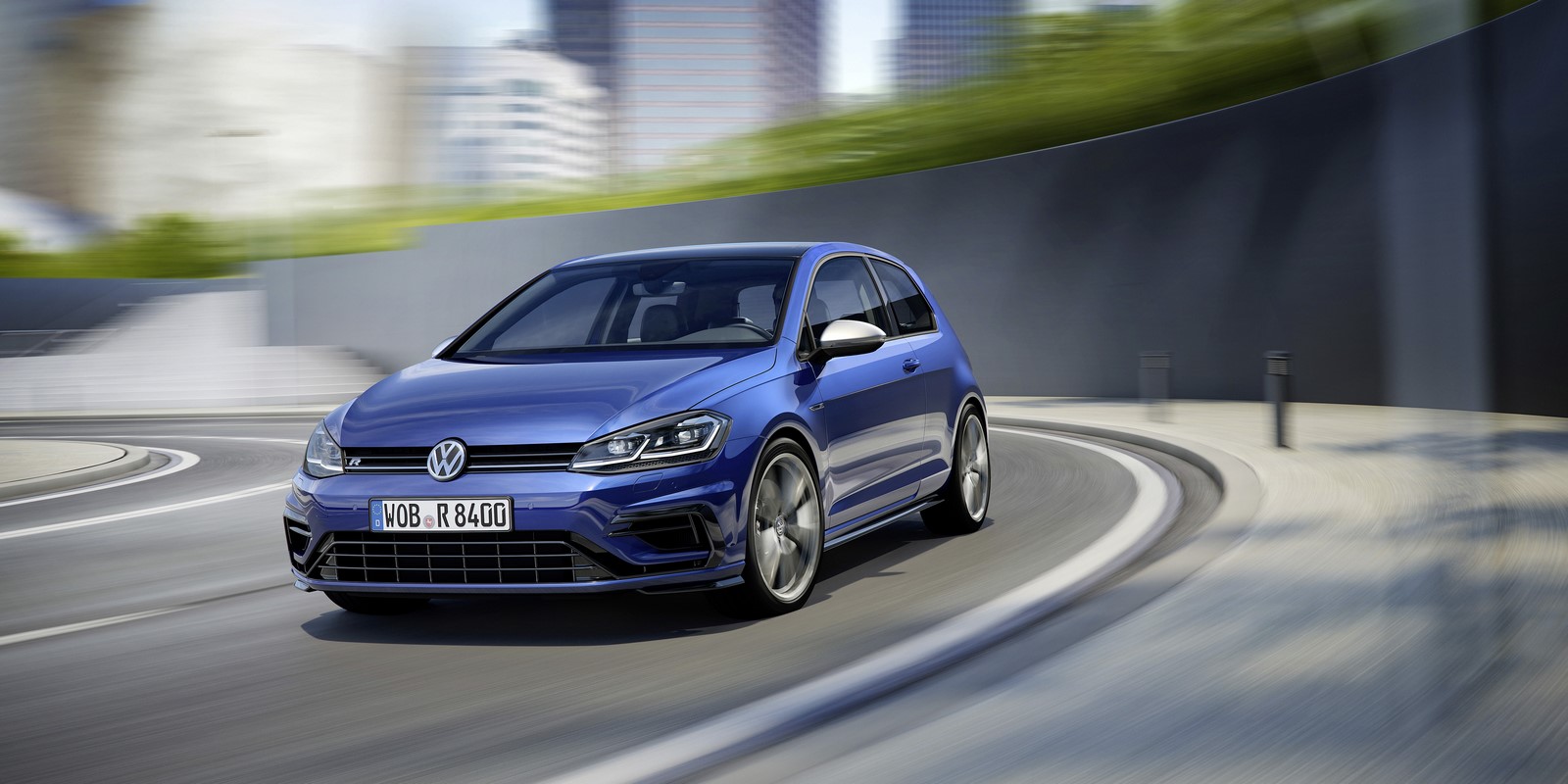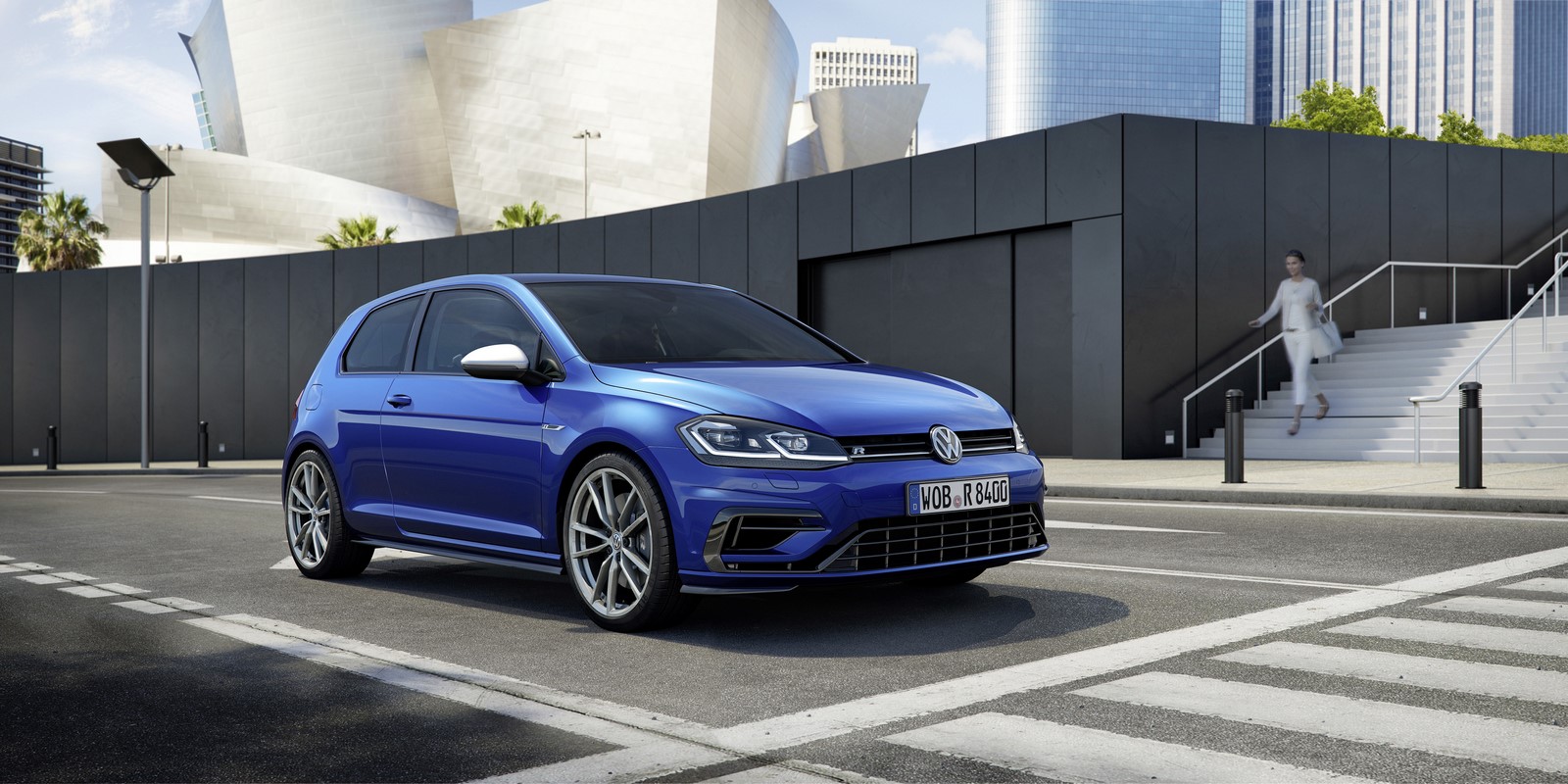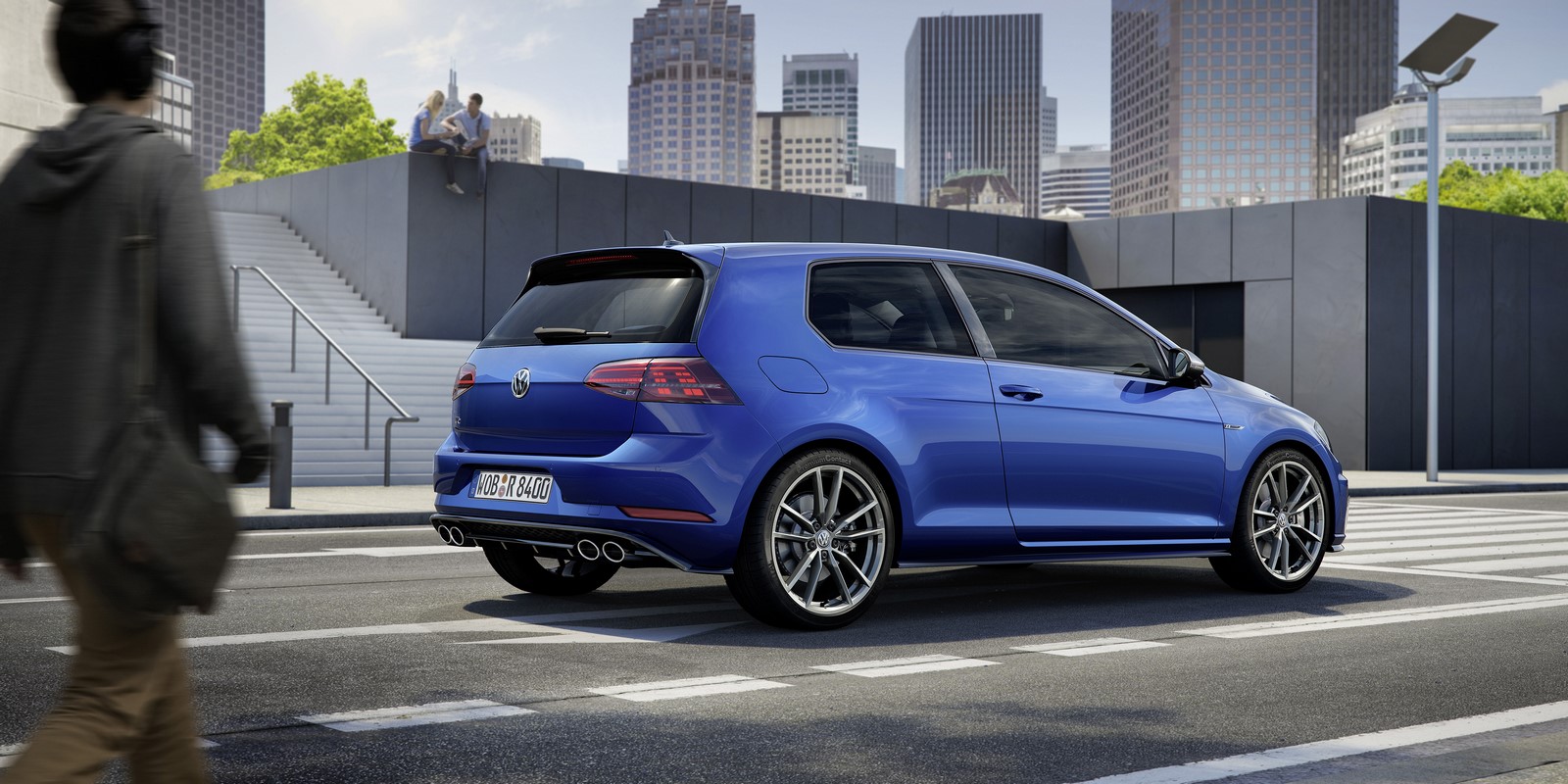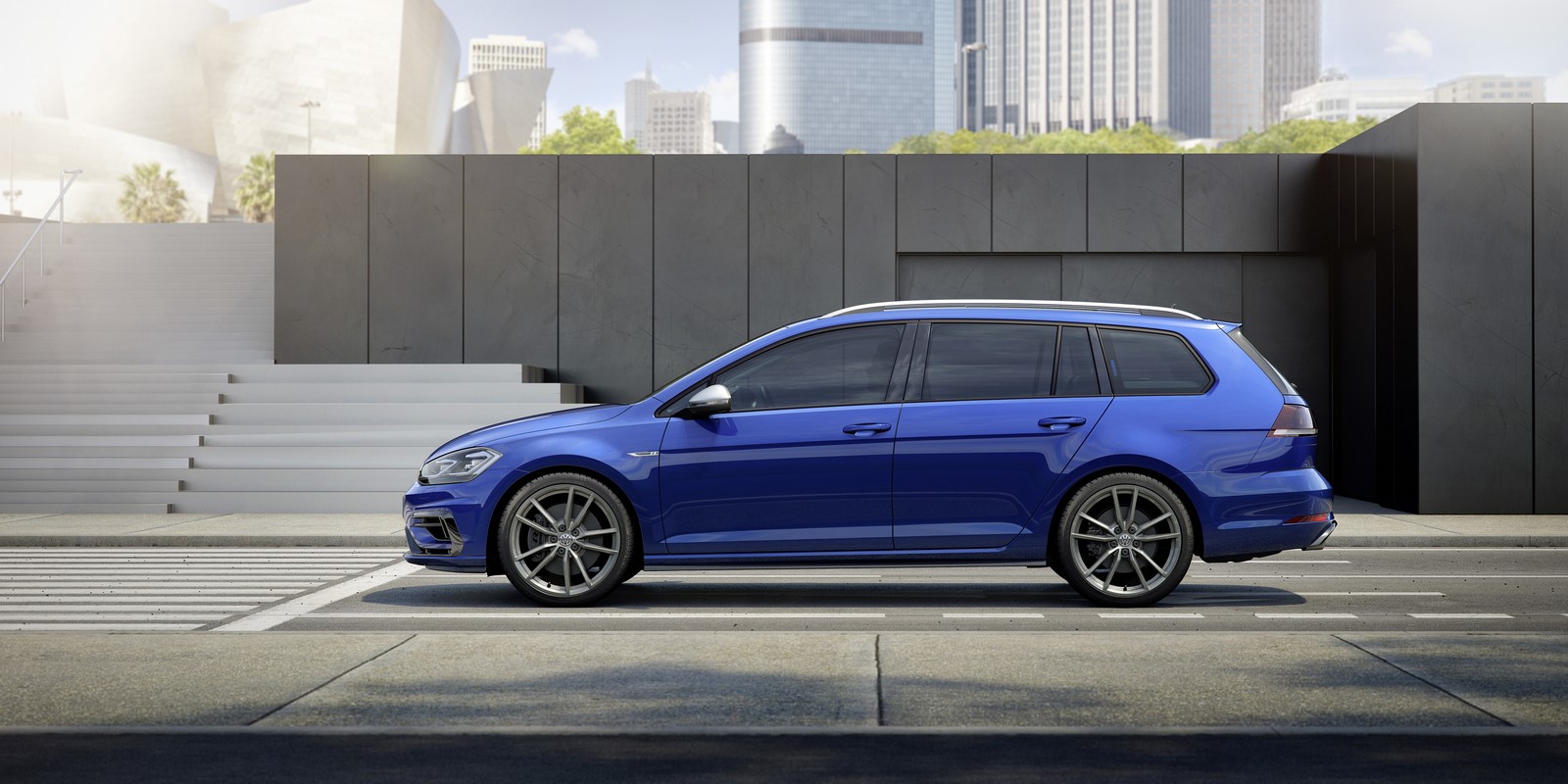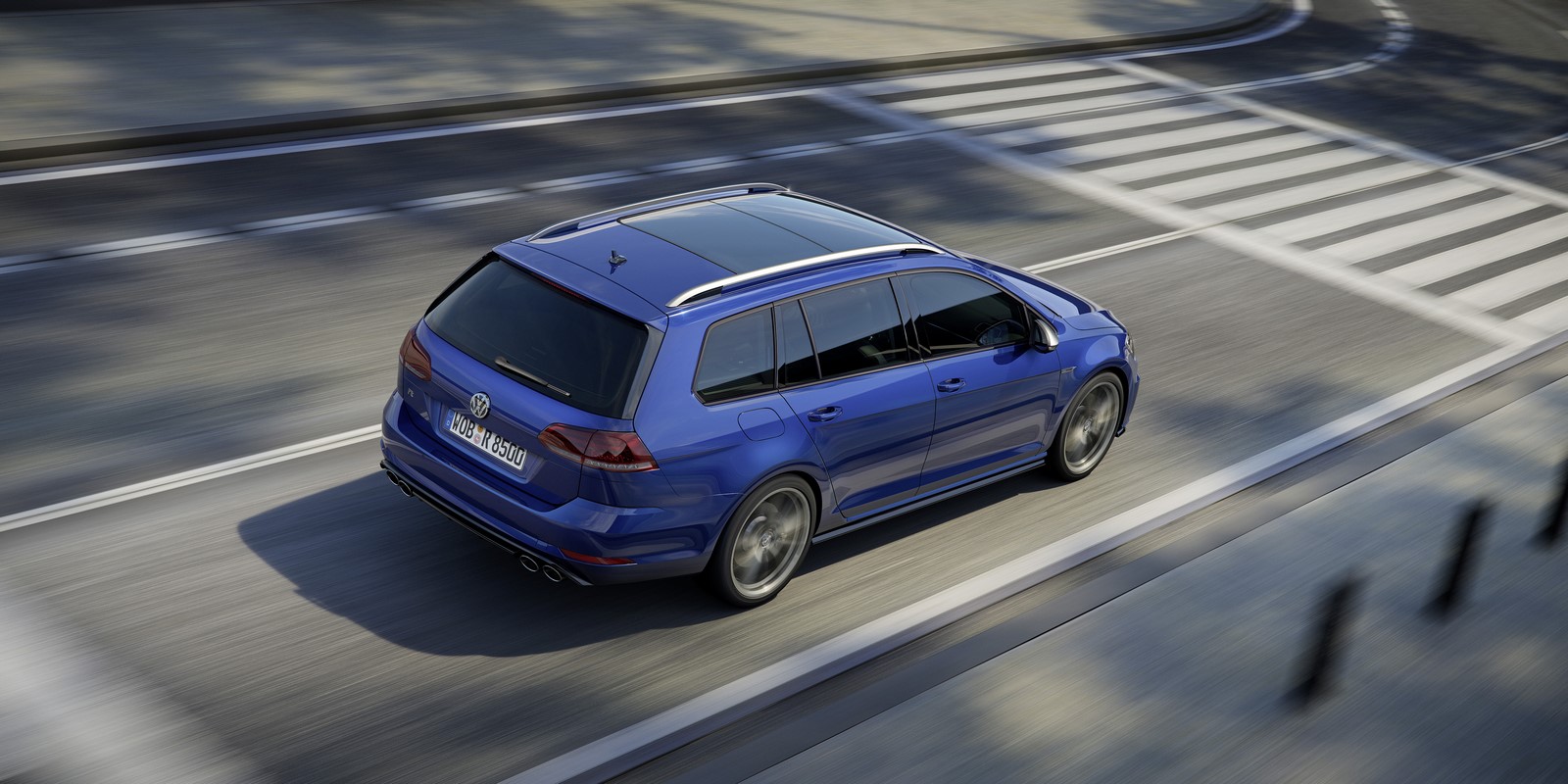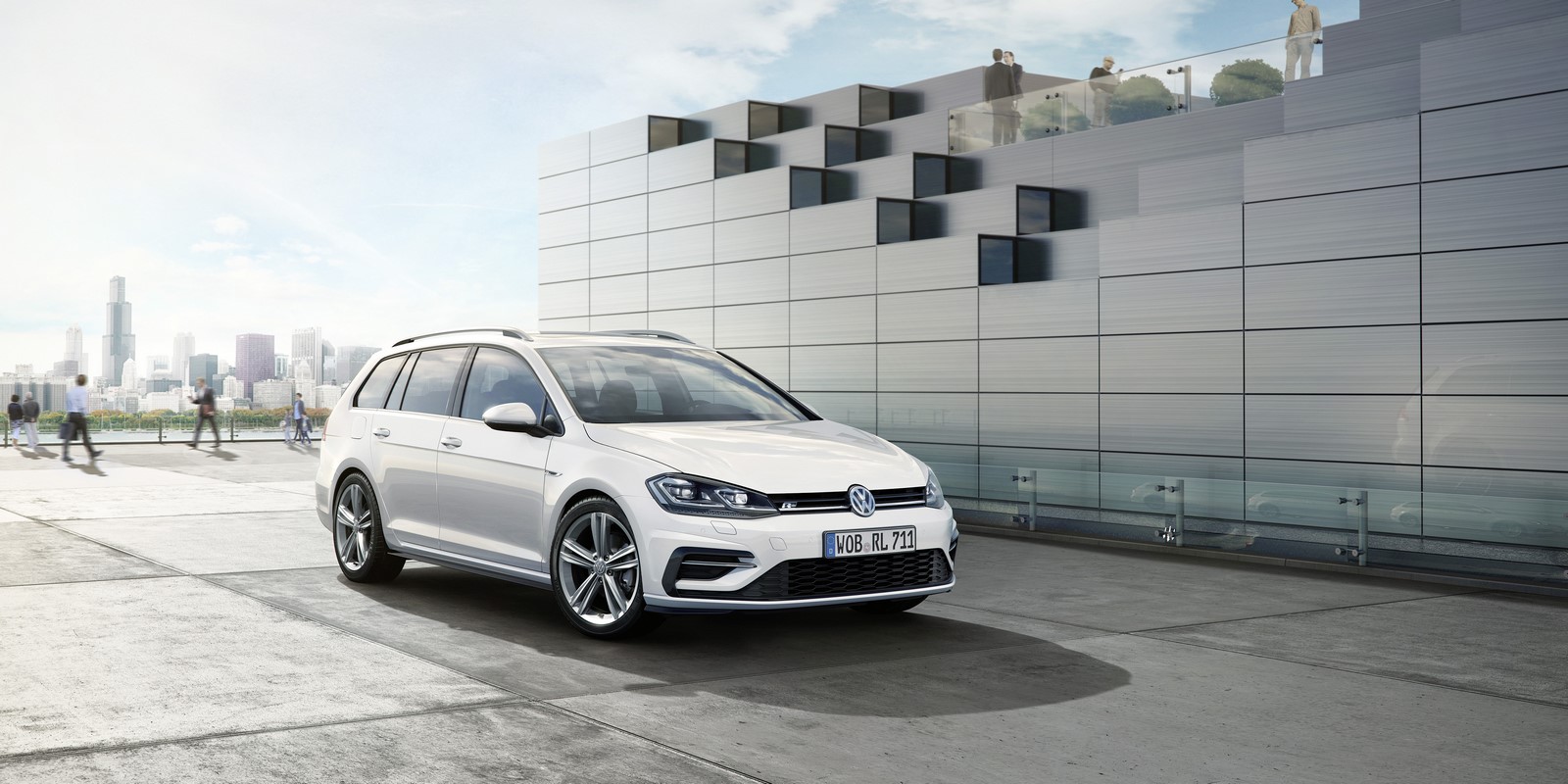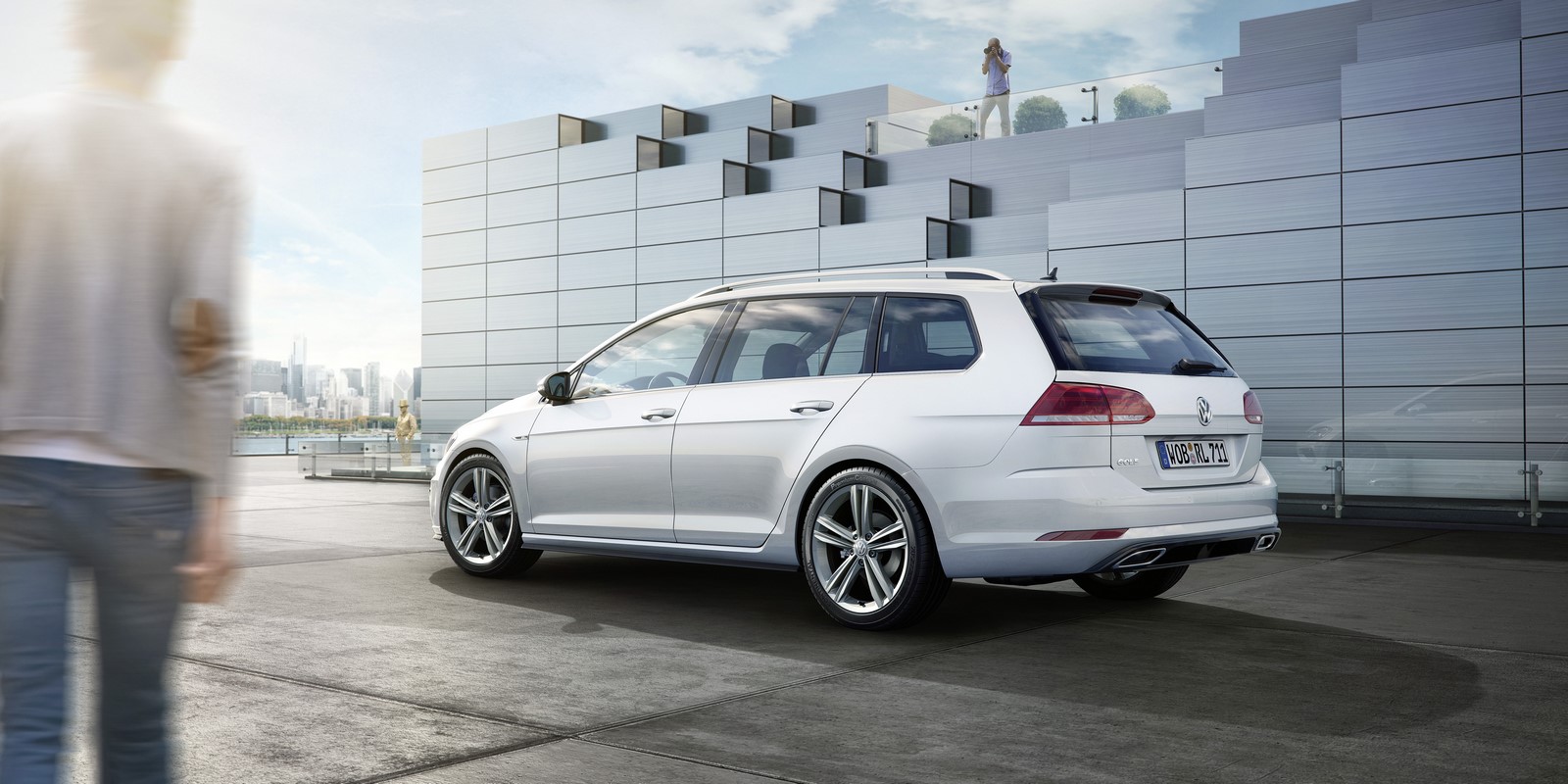H Volkswagen παρουσίασε το ανανεωμένο Golf R πoy διαθέτει νέους προφυλακτήρες, νέα φωτιστικά σώματα και νέες ζάντες. Στο εσωτερικό, όπως και στο απλό Golf facelift, συναντάμε νέα διακοσμητικά, τον ψηφιακό πίνακα οργάνων 12,3″, head-up display, νέες ταπετσαρίες, αλλά και την νέα οθόνη αφής διαστάσεων 9,2″ του συστήματος ενημέρωσης και ψυχαγωγίας. Η νέα οθόνη (Discover Pro) υποστηρίζει ηχητικές εντολές και gestures, κάνοντας το Golf το πρώτο μοντέλο στη κατηγορία των συμπαγών αυτοκινήτων που εξοπλίζεται με υποστήριξη για gestures.

Κάτω από το καπό του ο 2.0 TSI κινητήρας δυνάμωσε στα 310 άλογα με 400 Nm ροπής, μια αύξηση της τάξεως των 10 ίππων και των 20 Nm ροπής. Συνδυάζεται είτε με 6αρι μηχανικό, είτε με DSG, με την κίνηση να περνά στον δρόμο από όλους τους τροχούς, με τα 0-100 χλμ/ώρα να τα κάνει στο εντυπωσιακό νούμερο για hatchback των 4,6 δευτερόλεπτων! Επίσης, όπως αναμενόταν, το Golf R, προσφέρεται και σε Variant έκδοση. Στη Γερμανία το Golf R ξεκινά από τις 40.675 ευρώ και το Golf R Variant από τις 44.800 ευρώ.

Η Volkswagen ανακοίνωσε επίσης πως βασική έκδοσή του Golf γίνεται αυτή με τον 1.0 TSI των 85 ίππων με 200 Nm ροπής, με τον 2.0 TDI των 150 ίππων να μπορεί να συνδυαστεί με σύστημα τετρακίνησης.
Στις σχετικές ειδήσεις, η Volkswagen εγκαινίασε ένα νέο εργοστάσιο παραγωγής αυτοκινήτων στην Κένυα. Το εργοστάσιο βρίσκεται στην πόλη Thika, κοντά στην πρωτεύουσα της Κένυας Ναϊρόμπι, και γίνεται το τρίτο εργοστάσιο της γερμανικής εταιρία στην Αφρική, με τα άλλα δύο να βρίσκονται σε Νιγηρία και Νότιο Αφρική. Το εργοστάσιο θα κατασκευάζει αρχικά 1.000 αυτοκίνητά ετησίως, έχοντας ωστόσο την δυνατότητα να κατασκευάζει έως και 5.000 μονάδες κάθε χρόνο. Το πρώτο μοντέλο που κατασκευάζει είναι το Polo Vivo που πωλείται στην τοπική αγορά.
[learn_more caption=”Δελτίο Τύπου”]
Other versions of the new Golf can now be ordered
- New entry-level car: Golf 1.0 TSI1 launches at price of €17,850
- New sports cars: Golf R2 and Golf R Variant3 with 228 kW / 310 PS
- The new Golf R with 228 kW / 310 PS The new Golf R with 228 kW / 310 PS
Now it is possible to order nearly all versions of the new Golf. This also means that pre-sales have launched for the entry-level version with 63 kW / 85 PS. The Golf 1.0 TSI Trendline1 at this power level costs €17,850 – its price has not risen one cent despite substantially improved features. In addition, it is now also possible to order the Golf 2.0 TDI 4MOTION4 all-wheel specialist and the Golf R2 which now has a power output of 228 kW / 310 PS. Since the beginning of December it has been possible to configure all Golf and Golf Variant models of the Trendline, Comfortline and Highline equipment lines as well as the Golf Alltrack and the Golf GTI5.
The 63 kW / 85 PS1 Golf has a 1.0-liter TSI that is being used here for the first time; the efficient turbocharged direct-injection petrol engine consumes just 4.8 l/100 km. The Golf 2.0 TDI 4MOTION4 with 110 kW / 150 PS is also launching now as the all-wheel version of the diesel models (from €29,600 / from €30,750 as a Golf Variant6). Like all new Golf cars, they too are now fitted with LED tail lights and the new Composition Colour infotainment system as standard.
Golf R2 and Golf R Variant3 play in a league of their own. The power output of the Golf R2 (from €40,675 with manual gearbox / Golf R Variant from €44,800 with DSG3) was boosted for model year 2017. This model – the most powerful Golf – now develops 228 kW / 310 PS (10 PS increase) and transfers 400 Nm of torque (20 Nm more) to the all-wheel drive system. Fitted in this way, the Golf R2 accelerates to 100 km/h in just 4.6 seconds.
1Golf 63 kW / 85 PS fuel consumption in l/100 km: urban 6.0 – 5.9 / extra-urban 4.2 – 4.1/ combined 4.9 – 4.8, CO2 emissions (combined) in g/km: 111 – 108; efficiency class: B
2Golf R 228 kW / 310 PS fuel consumption in l/100 km: urban 10.1 – 8.7 / extra-urban 6.6 – 6.0 / combined 7.9 – 7.0, CO2 emissions (combined) in g/km: 180 – 160; efficiency class: E-D
3Golf R Variant 228 kW / 310 PS fuel consumption in l/100 km: urban 8.9 / extra-urban 6.2 / combined 7.2, CO2 emissions (combined) in g/km: 164; efficiency class: D
4Golf 2.0 TDI 4MOTION 110 kW / 150 PS fuel consumption in l/100km: urban 5.8 – 5.7 / extra-urban 4.2 – 4.1 / combined 4.8 – 4.7, CO2 emissions (combined) in g/km: 125 -123; efficiency class: B
5Golf GTI 169 kW / 230 PS fuel consumption in l/100 km: urban 8.2 – 7.8 / extra-urban 5.5 – 5.3 / combined 6.4 – 6.3, CO2 emissions (combined) in g/km: 148 – 145; efficiency class: D
6Golf 2.0 TDI Variant 4MOTION 110 kW / 150 PS fuel consumption in l/100 km: urban 5.9 – 5.8 / extra-urban 4.4 – 4.3 / combined 5.0 – 4.9, CO2 emissions (combined) in g/km: 127 – 125; efficiency class: A
Nairobi / Wolfsburg, 21 December 2016
Developing new market potentials: Volkswagen inaugurates vehicle production facility in Kenya
Kenya’s President Kenyatta and Volkswagen CEO Diess officially open facility near Nairobi
First locally produced vehicle – a Polo Vivo – rolls off production line in Kenya
Local training center planned
Diess: “Systematically developing our position in the fast-growing African car market.”
Volkswagen is forging ahead with the regionalization of its worldwide automobile business and today inaugurated a vehicle production facility in Kenya. Together with the President of Kenya, H.E. Uhuru Kenyatta, Dr. Herbert Diess, CEO of the Volkswagen brand, was present when the first locally produced Polo Vivo rolled off the production line. With the CKD production of the bestselling car model in the sub-Saharan region, Volkswagen is stepping up its commitment to Africa. This is a key step in the development of new opportunity markets – with the right products, local partners and training in the region.
At the inauguration, Diess underlined Kenya’s key role within the Volkswagen brand’s Africa strategy: “After over 60 years of Volkswagen vehicle production in South and North Africa, I am delighted to now have a further site in Kenya. We will systematically continue to develop our position in the fast-growing African car market.”
In addition to vehicle production, Volkswagen will be offering Kenyan customers a comprehensive package including a manufacturer’s guarantee as well as a maintenance and service plan. Financing schemes will be developed together with local banks in order to allow individual mobility and to provide Volkswagen with the impetus it needs for its re-entry to the Kenyan market.
President Kenyatta said: “A few months ago, this was only a dream. Now Volkswagen’s investment in Kenya has become reality. This is further proof of my government’s determination to strengthen the production location of Nairobi and to forge ahead with the industrialization of the nation.”
Third Volkswagen production plant in Africa
The joint project implemented together with DT Dobie in Thika near to the Kenyan capital Nairobi is Volkswagen’s third production plant in Africa, together with one plant in South Africa and one in Nigeria. In the initial phase, annual production of up to 1,000 vehicles is planned. In the long term, it will be possible to produce up to 5,000 units per year at the plant of Kenya Vehicle Manufacturers (KVM). The assembly facility is flexibly designed and offers the possibility of investigating the production of further models in the event of positive developments in the new car market. In addition, the Volkswagen Group recently announced plans to start vehicle production in Algeria.
Volkswagen committed to sustainable training in Kenya
For the start of production at Thika, the employees are being trained by Volkswagen Group South Africa. This will ensure that all vehicles have constant high quality levels. Volkswagen is also investigating possible approaches for the establishment of a sustainable, practically oriented training initiative. Apart from school or academic training, young people are also to receive practical training in order to improve their employment prospects in the region as a whole.
Kenya is an opportunity market in Africa. The country has an outstanding position within the region of East Africa and has the most powerful economy in the East African Community (EAC) with a GDP of about US$63 billion. In addition, Kenya is a key transit country for trade throughout East Africa. The good economic relations between Kenya and Germany are also being continuously and strategically expanded by the governments concerned.
Volkswagen and Kenya – this is a relationship with a tradition: Volkswagen already assembled the Beetle in Kenya in the 1960s. The Volkswagen brand is now returning to Kenya with its first model, the Polo Vivo.
[/learn_more]

